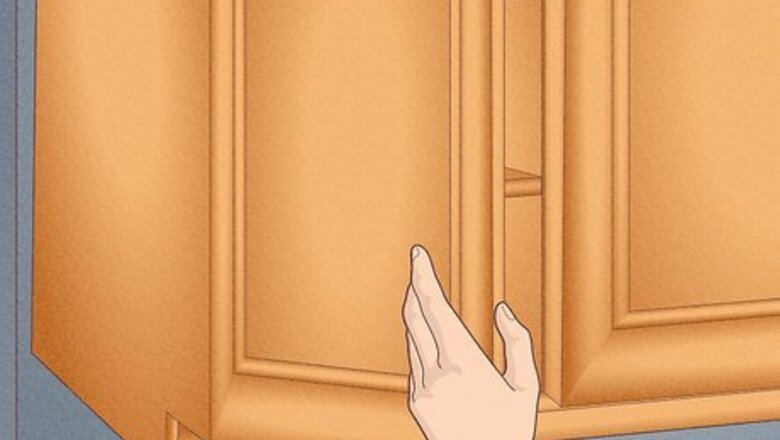
views
Preparing the Cabinet Doors
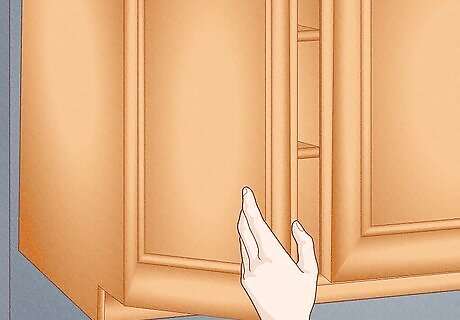
Determine what type of wood your cabinets are made of. Whitewashing is best suited to a soft wood like pine. A wood like oak will require pickling, a technique of whitening wood. Pickling is considered a method, not a finish, and though you can pickle pine and other soft woods, woods like oak and ash are the most common type of wood you can pickle. You can create your own pickling stain for oak and ash wood, or you can purchase pre made pickling stains.
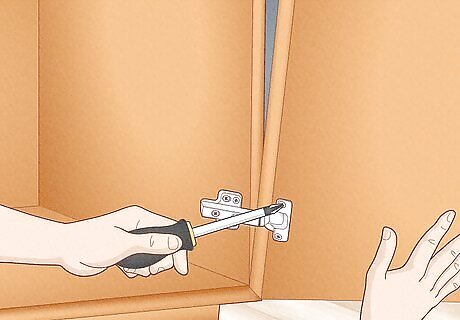
Detach the cabinet doors. Taking off the doors will make them easier to whitewash and give you easier access to the cabinet frames. It's also a good idea to work on the cabinetry and the doors separately. Use a drill to remove the doors. When you store the screws, label them so you can tell which door they came from. As the hardware is already set to a particular door, labelling the screws will prevent any confusion later when putting the doors back on.
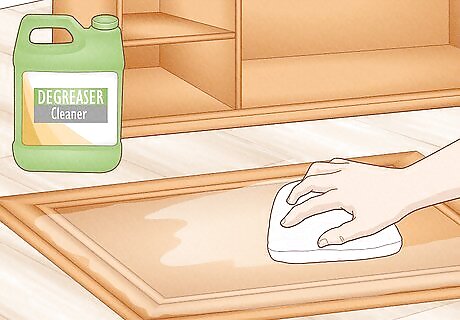
Clean the doors. Before you start treating the wood, use rags and a heavy duty degreaser to clean the doors. Apply the degreaser to the front and the back of each cabinet as well as to the frames. Wipe down and repeat these steps as necessary until the cabinet and frame are very clean.
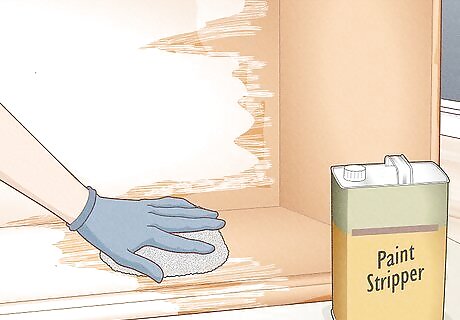
Strip the old stain from the doors. Whitewashing requires a blank canvas for the wood stain to take. Paint strippers will do the job, but these harsh chemicals require excellent ventilation (or a respirator), safety goggles, neoprene/latex gloves, and a drop cloth to protect your floor. Apply one coat of paint stripper with steel wool, then wipe with a rag once the finish has dissolved. Most paint strippers are flammable, so dispose of the steel wool and rag in a sealed metal bucket.Alternatives:Furniture re-finisher: This more mild product may work if there are only one or two previous coats on the cabinet.Other paint strippers: if yours is ineffective, try a more powerful option. From weakest to harshest, these are varnish, lacquer, paint, and polyurethane removers.
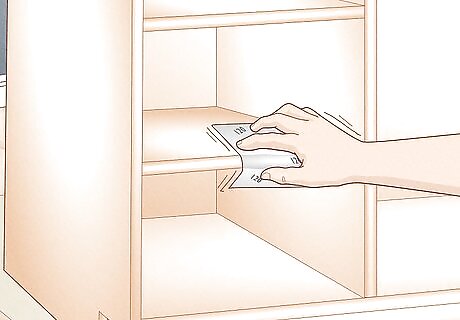
Sand the cabinets. You can sand the surface by hand or by using a power sander. The goal is to uncover the natural color of the wood cabinets. When sanding, always move in the direction of the wood grain, rather than against it.Sanding by hand: fold a quarter of a sheet of 120 grit sandpaper into thirds to make a pad that fits your palm. Wrap it around a block of wood to get a sharper edge to work into bevels and corners.Sheet sander: cheap power tool, sand in stages to 180 grit to avoid marks.Random orbital sander: fast and powerful, but requires purchasing more expensive sanding disks. Sand to 120 grit, and be careful not to nick cabinet edges.
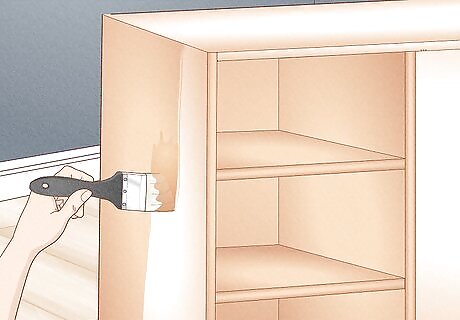
Condition the wood. If your cabinets are made of a soft wood like pine, it's important to condition them as these woods can sometimes appear blotchy when stained. Conditioning also raises the grain of the wood. You can use a pre-stain conditioner for this step. Apply the conditioner to the cabinets with a clean brush designed for latex paints and then let them sit for 30 minutes. Follow up with a light sanding of the cabinets using the 120 grit paper again. This final sanding will ensure the cabinets have a smooth surface to absorb the stain.Dewaxed shellac is an alternative option, if heavily diluted and wiped off fairly quickly. This is a risky method, so experiment on scrap lumber first. Alternatively, apply dewaxed shellac to the end grain to prevent over-staining that area. Wipe off unabsorbed excess, then sand lightly.
Whitewashing the Cabinets
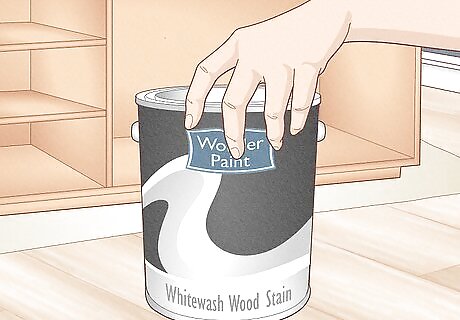
Choose a whitewash wood stain. Different stains will create warmer or darker tones to the cabinets, so consider your preferred tone and choose a wood stain that will work well in your home. Brands such as Minwax have a variety of different wood stains to choose from. Water-based wood stains produce fewer fumes, dry fast and clean-up easier than oil-based wood stains, but the color may fade quicker. Only use oil-based stains in a well-ventilated area.
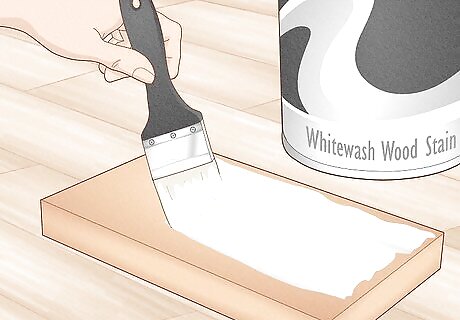
Test the stain before you use it. Whenever you are applying stains of any type, it's a good idea to test the stain on a sample of scrap wood of the same wood-type as the piece you'll be working on. Shake the can of stain thoroughly before you open the can and test the stain. This will mix in any pigments that have settled at the bottom of the can. Apply the stain to the scrap wood with a paintbrush and let it set for 2 to 3 minutes. Ensure you are happy with the results before moving on to the next step.
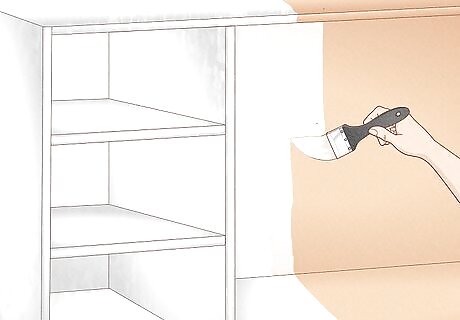
Apply the stain to the cabinets. Using a clean rag, apply the stain with long, smooth strokes in the same direction and work the stain into the wood. Follow the line of the grain while accentuating any knots in the wood. Wipe away excess stain with another clean rag or a soft cotton cloth that you've folded into a pad. The more pressure you apply to the rag or the pad, the more the wood grain will show through the stain on the final product. If you are pickling oak cabinets, apply the pickling stain with a brush and wipe the stain against the grain. Due to the large pores and the natural grain pattern of oak, wiping against the grain is essential to working the stain down into the pores of the wood. Once you've worked the pickling stain into the pores of the wood, use a clean rag to wipe away any excess. If your rag becomes tacky as you are staining the cabinets, replace it with a clean rag.
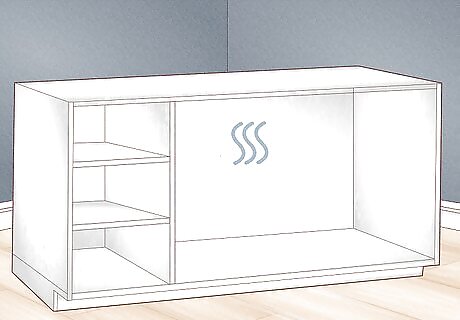
Let the cabinets dry completely. This should take about 1 to 2 days. If the surface is tacky to the touch, the wood stain is not completely set and will need more drying time.
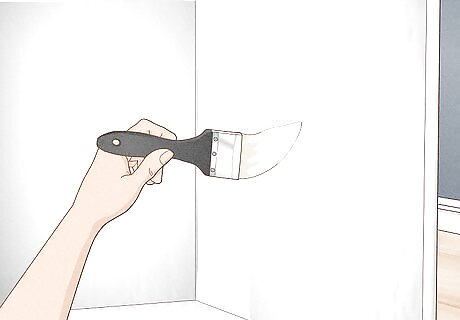
Finish the cabinets with a top coat. While whitewashing enhances the wood grain, it does not offer any wood protection. To finish the cabinets, use non-yellowing protective top coat that will penetrate the wood's pours and protect the wood from within, such as a water-based lacquer, clear acrylic or natural Tung oil. Apply the top coat with a high quality brush that is designed for latex or water-based products, so that stray bristles don't end up on your top coat. Use overlapping continuous strokes to finish the surface, a process called "striking off." Allow the first coat to dry for about 4 hours, and then lightly sand the cabinets one last time with 220 grit sandpaper. Use a tack cloth to wipe away any excess reside left behind by the sandpaper, and then apply a second and final coat to the cabinets. When you finish the bottom of the cabinet, place the cabinet on a small block or shims so that the polyacrylic doesn't stick to the surface of your work area. Avoid using oil-based protective finishes over whitewashing or pickling as these finishes have a yellowish look that will detract from the white coloring of the whitewash look.
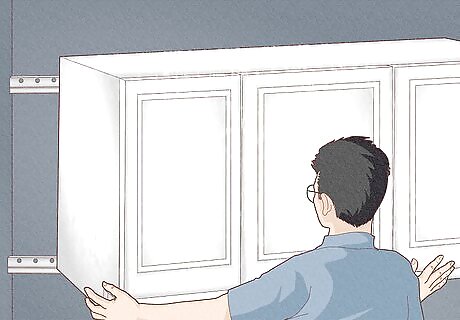
Re install your whitewash cabinets. Hang the cabinets back in their exact positions, using the labelled screws and hardware.


















Comments
0 comment